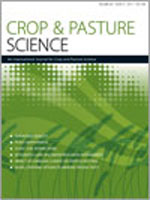The introduction of kikuyu (Cenchrus clandestinus (Hochst. ex Chiov.) Morrone) into Australia in 1918 has seen it become established and adapted to several geographic regions in a wide range of ecologies and environmental situations. After it naturalised to local conditions, researchers and farmers recognised the value of kikuyu in marginal and previously unproductive sites, where forage quality and quantity made this species popular with dairy farmers and pastoralists. Its versatility and prostrate, mat-forming characteristics also led to the adoption of kikuyu by local governments, homeowners and sporting organisations in urban environments as turf. Kikuyu has the ability to alleviate soil contamination and remediate soils, thus enhancing the use of previously unproductive land. However, the aggressive growth habit of the species, considered a problem in certain regions of the world, has led to a noxious weed classification in some states of the USA. This review includes information on expected changes to world agricultural and urban environments and the potential expanded role of kikuyu. The origin of kikuyu grass, genetic variability, tolerances to soil salinity and drought, and potential for genetic improvement are also discussed.
How to translate text using browser tools
29 March 2017
Abiotic stress tolerance of kikuyu (Cenchrus clandestinus) and some related grasses and potential of kikuyu for agricultural and urban environments
Duncan Fraser,
Peter Sharp,
Nabil Ahmad,
Brett Morris,
Richard Trethowan
ACCESS THE FULL ARTICLE

Crop and Pasture Science
Vol. 68 • No. 3
April 2017
Vol. 68 • No. 3
April 2017
genotype diversity
kikuyu grass
salt and drought tolerance
untapped breeding potential




